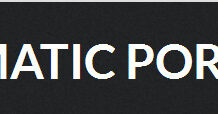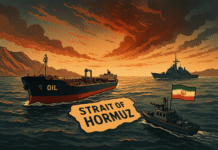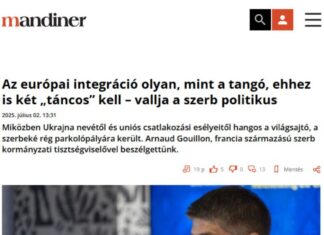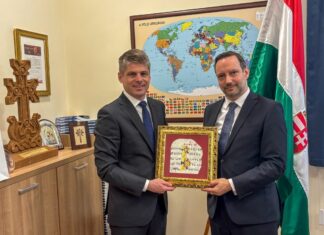The period of growing tensions between the United States and Russia (2013–2019) saw mutual accusations of digital interference, disinformation, fake news, and propaganda, particularly following the Ukraine crisis and the 2016 US presidential election. This article asks how the United States and Russia represent each other’s and their own propaganda, its threat, and power over audiences. We examine these representations in US and Russian policy documents and online articles from public diplomacy media Radio Free Europe/Radio Liberty (RFE/RL) and RT. The way propaganda is framed, (de)legitimized, and securitized has important implications for public understanding of crises, policy responses, and future diplomacy. We demonstrate how propaganda threats have become a major part of the discourse about the US–Russia relationship in recent years, prioritizing state-centred responses and disempowering audiences.
Introduction
How we talk and think about different forms of propaganda in different discursive arenas is crucial to the policies and strategies that result. This article compares the Russian and American public discourse around mutual propaganda activities at the time of their declining political relations (2013–2019), and explores the following question: How do they construct propaganda threats and appropriate responses? Our project rests on the principle that, while authoritarian and democratic systems of propaganda differ greatly, it is valuable to consider these together as interacting discourses, with implications not just for scholarship but for public understanding of crises, future diplomacy, and policy. We explore US and Russian mutual constructions of propaganda threat, conceptions of its power over audiences, and representations of self/other propaganda activities. We examine US and Russian key policy documents that put forward legal frameworks and strategic visions for media, information, and public diplomacy (PD), and compare the representations of propaganda in the two countries’ state-funded PD media Radio Free Europe/Radio Liberty (RFE/RL) and RT.
The article argues for a more productive framing of the power of propaganda and PD, both in the US-Russian context and beyond. We argue that the current fear-driven US and Russian discourse about propaganda drives policy responses and public reactions that prioritize an empowered state and disempowered citizens, with consequences for foreign policy, the public, and journalism. Both sides tend to see propaganda simply as an external-only threat and represent it through conflict-related language, despite the complexity of a rapidly expanding global influence economy. Propaganda is matched to agents and solutions that further diminish the agency of the audiences and enhance state-driven propaganda and censorship, instead of non-dominative responses that would enhance civil society and transparency, and enable free speech.
Propaganda and PD media
The definition of propaganda has been contested by many. Propaganda theorist Harold Lasswell’s (1927: 4) negative portrayal describes ‘the management of opinions and attitudes by the direct manipulation’. Yet negative definitions offer limited analytical clarity, since the term is often used simply to dismiss the opponent’s point of view. In this article, we adopt Taylor’s (2003: 7) neutral definition of propaganda as ‘a process by which an idea or an opinion is communicated to someone else for a specific persuasive purpose’. With a neutral definition, the ethics of a propaganda strategy consider the methods used, the desired and actual outcomes, and whose interests it is intended to serve.
PD is one tool governments traditionally use for extending international influence and advancing foreign policy objectives by engaging with foreign publics. PD took off when the United States sought to replace the term ‘propaganda’ for describing its foreign population influence, to distinguish US propaganda activities from those used in Nazi Germany or the Soviet Union (see Cull, 2006). While PD and propaganda overlap, not least in their purpose of serving a country’s interests through influencing public opinion, and some consider propaganda an umbrella term which embraces PD and other tools (Briant, 2015b), others have tried to differentiate PD as ‘persuasion by means of dialogue’ and more open to listening to and engaging audiences (Melissen, 2005: 18). As Brown (2008) has put it, ‘the best public diplomacy achieves credibility through careful presentation of fact and thoughtful argumentation, while the worst propaganda achieves credibility by falsification and sensationalism’. Towards the 2000s, PD became more popular internationally, particularly during the War on Terror (Briant, 2015b) and amid increased political attention to the concept of soft power (Nye, 2004). Gregory (2008) defines PD as a political instrument, which is ‘used by states, associations of states, and nonstate actors to understand cultures, attitudes, and behavior; build and manage relationships; and influence opinions and actions to advance interests and values’. PD involves impact on public opinion in other countries by means beyond traditional diplomacy, such as intercultural communication and exchanges, cultural diplomacy, advocacy, and international broadcasting (Jowett and O’Donnell, 2012), with the aim of ‘increasing awareness, managing reputations, changing legislation or altering attitudes’ (Simons, 2014: 441). More recently, the spread of social media has given rise to ‘Public Diplomacy 2.0’, which includes new communication channels and strategies (Cull, 2013).
International broadcasting is an important part of PD strategies, as it involves ‘the use of electronic media by one society to shape the opinion of the people and leaders of another’ (Price, 2003: 53). PD media help deliver messages and images to foreign publics to the advantage of an international actor. As Rawnsley (2015) argues, the success of PD media depends on finding the balance between being seen to provide professional journalism and trustworthy news on one hand and advancing the interests of the state they represent on the other. The configurations, outputs, and impact of PD media therefore involve the wider context of media systems and how societies understand the role of journalism.
The United States and Russia present a case of two major international actors with conflicting political interests, a long history of mutual propaganda activities, and considerably different media systems. Relations between the United States and Russia, particularly following the Ukraine crisis and 2016 US presidential election, have been marked by increased tensions, expanded propaganda efforts, and falling public trust in journalism and democratic politics. Accusations of ‘fake news’, digital interference, ‘computational propaganda’ (Woolley and Howard, 2017), and strategic hacking underlie widespread calls for the state and media organizations to respond to the new ‘post-truth politics’ (see Hutchings, 2017). US responses have included investment in PD, blacklists of ‘fake news’ websites, removal of disinformation from social media, a new National Cyber Strategy, registration of Russian state-run media as ‘foreign agents’, and debates on new state bills that would aim to improve public media literacy. Russia has restricted foreign ownership of media, passed new laws on countering ‘fake news’ and misinformation, increased investment in its own PD media, and similarly introduced a ‘foreign agents’ list. However, propaganda and PD configurations differ considerably between the US and Russian systems, including their domestic and foreign contexts, the role of the state, media protections and restrictions, and target audiences.
US PD media
Propaganda has played a key role in every US conflict since the war of independence, both for securing support for government action and as a tool in warfare and foreign policy. The first US systematic propaganda efforts during World War I (WWI), criticized for ‘heavy-handedness and deception’, created public hostility which led the government to adopt an official ‘strategy of truth’ – while funding private organizations to persuade on its behalf (Howell, 1997). US domestic media evolved a professionalized, market-dominated ‘liberal’ model with an established history of constitutional protections for media independence from the state (Hallin and Mancini, 2004; Siebert et al, 1963). In this landscape, commercial organizations played a prominent role in propaganda (Bernhard, 1999; Snow, 2009, 2014; Sproule, 1997), with governmental communications deliberately differentiated from totalitarian states’ direct control.
Democratic traditions organize propaganda through doctrine, law, and oversight, and distinguish that for foreign audiences and in conflict (such as PD and Psychological Operations) from Public Affairs for the US and global media (see Jowett and O’Donnell, 2012). Snow and Taylor (2006) described this as a ‘democratic propaganda model’, essentially truthful and restrained in its means, with respect for diverse viewpoints. While propaganda is still critiqued as not truly democratic (see Bacevich, 2006; Entman, 2008; Herman and Chomsky, 1988), some argue it can be compatible with democracy, facilitating public discourse and political participation (Puddington, 2000; Seib, 2009; Welch, 1999). Tensions between the ideal of democracy and practice of propaganda lead many political theorists to argue that democracies should be more deliberative (Dryzek, 2000; Guttman and Thompson, 2004). Globalization and convergence brought both concentrations of media power and diffuse interactive media (Hallin and Mancini, 2017; Shister, 2003), together favouring populism (Benkler et al, 2018). An Internet initially heralded as democratizing, increasingly raises concerns over enabling accelerated dissemination and targeting of propaganda from sources foreign and domestic (Briant, 2015a; Hindman, 2018; Zuboff, 2019).
The idea of democracies’ external PD broadcasters encouraging democratic processes in less free parts of the world has largely underpinned the proclaimed mission of US PD broadcasters since the Cold War. Under the US Information and Educational Exchange Act of 1947, known as the Smith–Mundt Act, the United States extended its narrative via broadcasters like RFE and sister station RL. Both were critical to the Central Intelligence Agency (CIA)’s clandestine efforts in the Cold War (Cummings, 2008) and claimed to be countering the ‘Big Lies of Communism with the Truth’ (Feinberg, 2013). As Hill (2001) indicates, they were conceived in opposition to offer ‘an alternative to the highly censored Radio Warsaws and Radio Moscows of the communist world’. RFE/RL combined funding and oversight by the CIA and policy guidance by the Department of State, with editorial decentralization and the more credible reporting of news both supporting and criticizing US policies (Johnson, 2018). Today, RFE/RL mission is to ‘promote democratic values and institutions by reporting the news in countries where a free press is banned by the government or not fully established’ (RFE/RL, n.d.-a). RFE/RL, now funded by an annual budget of US$124 million from the US Congress through the United States Agency for Global Media, supports 26 languages and reaches an estimated weekly audience of 33.9 million people. Disseminating government-produced programming (including RFE/RL) within the United States was prohibited until 2013, and the repeal of this ban raised concerns over government capabilities to influence public opinion at home (Briant, 2018; Sager, 2015).
Amid difficulty reaching audiences in Russia, in 2014, RFE/RL launched Current Time (in partnership with Voice of America) – a daily Russian-language TV news programme (since 2016, a TV channel) for Russian-speaking audiences. Its mission has been explicitly formulated as a response to ‘complex challenges involving Russia’ where Current Time’s aim would be to provide coverage of ‘events that are not reported, or are misreported, by the Kremlin-affiliated media . . ., to provide a reality check on the disinformation . . ., and to advance U.S. national interests’ (RFE/RL, n.d.-b). Both RFE/RL and Current Time TV were added to a list of ‘foreign agents’ by Russia’s Ministry of Justice.
Russia’s PD media
The Russian media system has been described as neo-Soviet, including ‘a rejection of balance or objectivity; flaws in media law; self-censorship; government interference and harassment of media outlets’ (Oates, 2007: 1279), and neo-authoritarian (Becker, 2004). Becker identifies its following key characteristics: predominance of state-owned media with limited autonomy, direct and indirect control over media messages, strategic use of broadcast media and particularly television, and a weak legal system that means minimal media protection. The state remains the major actor in Russian news media (Vartanova, 2015). In recent years, Russia reintroduced criminal defamation and put significant pressure on oppositional voices and blogs. Free expression is under threat according to Human Rights Watch (2019), with the exclusion of opposition candidates from city assembly elections in Moscow and use of excessive force against protesters.
Information technologies and media are central to how Russia understands and increasingly applies ‘soft power’ in foreign policy (Sergunin and Karabeshkin, 2015) and, consequently, to how it understands external threats and solutions to them. President Putin (2012) defined soft power as ‘promoting one’s interests and policies through persuasion’, which has translated into Russian PD initiatives that use a combination of international broadcasting and web-based social networks to engage foreign publics (Simons, 2014). For example, Russian media organizations with large audiences in post-Soviet states have been instrumental in pursuing regional dominance (Szostek, 2018b). Recent scholarship has examined Russian external propaganda activities, particularly in Eastern Europe and Ukraine (Miazhevich, 2014; Szostek, 2018a) and in digital spaces (Aro, 2016; Kim et al., 2018). However, scholars have also described as problematic the labelling of all Russian PD media output as propaganda or assuming central coordination of all Russia’s media messages by the Kremlin (Hutchings and Tolz, 2020). While incorporating some of the old Soviet practices, Russia’s PD has been described as pragmatic and profit-oriented rather than ideological (Lukyanov, 2013).
We focus on RT, Russia’s primary multimedia and multi-language external broadcaster launched in 2005 as Russia Today and rebranded RT in 2009. Journalist Peter Pomerantsev (2014: 46), a prominent critic of RT, describes it as ‘Russia’s answer to BBC World and Al Jazeera’. RT sees its mission in ‘acquaint[ing] international audiences with a Russian viewpoint on major global events’ (RT, n.d.) – effectively claiming to provide alternative rather than unbiased coverage. Between 2005 and 2013, the Russian government spent US$2 billion on RT (Zavadski, 2015). Most employees are American, but senior positions are Russian, enabling claims that Russian authorities are involved in editorial and staffing decisions and censorship (Gray, 2014). Liz Wahl, the former RT journalist who resigned on air in 2014, argued that its true aim is to generate ‘confusion and sow distrust in Western governments and institutions by reporting anything which seems to discredit the West, and ignoring anything which is to its credit’ (Wahl, 2016). The work of RT is often critiqued as centred on the creation of uncertainty and doubt, promotion of anti-establishment sentiment, and stimulation of conspiracy theories (see Yablokov, 2015), while US PD media, although claiming truth and accuracy as well as greater journalist autonomy, are frequently accused of ignoring alternative cultural and political contexts and aiming to persuade rather than build dialogue (Comor and Bean, 2012).
Both RFE/RL and RT perform PD functions, even though both maintain a claim to objective and professional journalism. RFE/RL mission has been described as a ‘surrogate broadcaster’ – offering an alternative to the government- or party-controlled media in Eastern Europe and giving voice to dissident views, otherwise unavailable to those audiences (see Puddington, 2000). As Russia’s PD broadcasters were created, however, RT adopted a similar claim, hiring ‘dissident’ broadcasters within the West (such as Chris Hedges and George Galloway for the United Kingdom), and quoting prominent critics of Western governments, to claim they cover viewpoints, actions, and events that Western governments try to downplay or hide from their domestic audiences. The 2018 ruling of UK media regulator Ofcom that RT broke impartiality rules, and the 2014 accusations by the US State Department that RT was a ‘propaganda bullhorn’ were repeatedly represented by RT as ‘coming under fire’ for professional journalism that contributes to democratic accountability in the West (e.g. RT, 2014). Despite operational differences, RT and RFE/RL claim to expose Western and Russian misinformation and focus their media discourse on propaganda threat and power.
Method
We examine the representation of propaganda activities in policy documents and PD media output during the recent period of growing tensions in US–Russia relations (2013–2019). The combination of governmental and PD media sources reveals the formulation, legitimation, and reproduction of propaganda as a political tool and a societal threat by diverse power actors, and the projection of these formulations to external target audiences. Atkinson and Coffey (2004: 58–59) refer to policy documents and media output as ‘social facts’, which are produced in socially organized ways and associated with distinct social occasions, therefore offering rich evidence of constructed realities and discourse.
We reviewed documents for 2013–2019 that establish legal frameworks and strategic policy visions for media and information regulation across US Congressional legislation and Russian State Duma digital archive, together with national strategic documents specifically relating to propaganda activities. For the United States, these include US International Communications Reform Act 2015 (H.R.2323), Countering Foreign Propaganda and Disinformation Act 2016 (H.R.5181), Intelligence Community Assessment ‘Assessing Russian Activities and Intentions in Recent US Elections’ 2017, and National Cyber Strategy 2018. Russia’s key documents include Mass Media Law (2013 version), Foreign Policy Concept 2016, Doctrine of Information Security 2016, and the 2019 Federal Law on Amending Article 15-3 of the Federal Law on Information, Information Technologies and Protection of Information (the latter also known as anti-fake news law). These documents were examined for key thematic frameworks – a process which involves identifying, evaluating, and interpreting policy descriptions of pre-selected issues and noting emerging patterns (Srivastava and Thomson, 2009). Specifically, we investigated how policy documents represented propaganda threats and targets, attributed propaganda activities to specific actors, spoke of their own versus foreign propaganda activities, and defined propaganda effect on audiences. The documents were uneven – offering extensive data on some of these issues and devoting less attention to others (Bowen, 2009). For example, Russia’s Foreign Policy Concept situated PD activities specifically within foreign policy contexts while the Doctrine of Information Security 2016 and US National Cyber Strategy largely spoke of domestic online vulnerabilities. However, taken together, these documents regulate state interpretations and responses to propaganda threats across various policy domains.
The selection of PD media articles focused on three periods: May to August 2014 when the United States and Russia widely accused each other of propaganda campaigns over Ukraine, December 2016 to February 2017 when PD media speculated on the changes to the US–Russia relationship just before and after Donald Trump’s inauguration, and March to April 2019 when media attention to propaganda was revived by the public release of the redacted version of the Mueller Report. Data were collected directly from RFE/RL and RT websites using keyword ‘propaganda’ as it is specifically the construction of propaganda, its threat, and power that this article examines.1 Following an initial screening that identified articles which discussed US and Russian propaganda at length rather than simply mentioned it, a total of 135 articles were selected for analysis – 90 for RFE/RL (15 each for the English- and Russian-language RFE/RL which differ in target audiences and content in each period) and 45 for RT (15 in each period).
Using thematic framework and critical discourse analysis (CDA), we then compared how the representation of US and Russian propaganda activities differed between RFE/RL and RT, and between these PD media and policy documents. As a ‘theory and method of analysing the way individuals and institutions use language’ (Richardson, 2007: 1), CDA can capture constructions of power, domination, and (in)security at a given moment in political and social life (Fairclough, 2001; van Dijk, 1993). We examined a range of factors, including naming of propaganda actors, construction of self/other boundaries and moral differentiations between ‘our’ and ‘their’ propaganda, representation of actions and victims, formulations of threat and security, metaphors, and dominant sourcing and news structures.
Construction of the propaganda threat
Concerns about ‘propaganda’, ‘fake news’, and misinformation have been named a matter of national security and a priority in foreign policy in both Russia and the United States in recent years. The threat is formulated similarly in both US and Russian documents, as foreign influence that undermines stability, national interests, and civil/democratic society. However, the source of threat and its perceived target or victim are formulated differently.
US documents suggest that ‘disinformation and other propaganda . . . undermine the national security objectives’, cause a ‘destabilizing effect on United States allies and interests’ (H.R.5181), ‘undermine faith in the US Government and fuel political protest’ (Intelligence Community Assessment, 2017), and ‘sow discord in our democratic processes’ (National Cyber Strategy, 2018). Propaganda is situated externally, as ‘foreign misinformation’ and ‘foreign propaganda’ (including in the title of H.R.5181 Countering Foreign Propaganda and Disinformation Act) and as ‘malign foreign influence operations’ (National Cyber Strategy, 2018). ‘Foreign propaganda’ is frequently assigned to particular countries, for example, Russia and China (H.R.5181). National Cyber Strategy (2018) directly blames Russia, China, Iran, and North Korea, along with nonstate actors such as terrorist networks, for conducting ‘reckless cyber attacks . . . to profit, recruit, propagandize’ as a way to ‘challenge the United States, its allies, and partners’. The target of external propaganda and disinformation is conceptualized in the language of foreign policy and existing alliances: as the ‘US and Western governments’ or the ‘US and key allies and partners’ (Intelligence Community Assessment, 2017). The overall understanding of propaganda in US policy documents is that of a tool of foreign state and nonstate influence against the West that threatens national interests and security.
Russian documents portray propaganda as threatening to ‘destabilize the internal political and social situation’, exert ‘information pressure on the population, primarily on the Russian youth . . . to erode Russian traditional spiritual and moral values’ (Doctrine of Information Security of the Russian Federation, 2016), and create ‘possibilities for mass violations of public order or public security’ (Federal Law on Amending Article 15-3, 2019). The reference to youth is important: mobilizing on social media, it was a noticeable group behind Russian protests in 2011 to 2013, 2017, and 2019, while the Kremlin has devoted increasing attention to establishing pro-governmental youth organizations and pushing for ‘patriotic upbringing’ and education (Hemment, 2015; Khvostunova, 2019). ‘Information pressure’ from abroad presents youth discontent as external manipulation and a matter of security and sovereignty. Other propaganda threats include the more general spreading of ‘information which negatively influences civil society’ (Mass Media Law, 2013) and undermining Russia’s ‘information security’ and ‘stability’ (Foreign Policy Concept of the Russian Federation, 2016). ‘Foreign’ in Russian documents is used to denote the externality of communications, misinformation, and target audiences, but with no indication of locations or countries. The Doctrine of Information Security of the Russian Federation (2016) speaks of ‘certain states’ and ‘a number of foreign countries’ trying to ‘undermine the Russian Federation and its allies’; yet, the external threat remains faceless and broadly defined. Instead, the origin and target of propaganda can be anywhere: Foreign Policy Concept of the Russian Federation (2016) speaks of a ‘global information space’ where information becomes increasingly exposed to manipulation. The document names cyber security and addressing ‘threats involving the use of information and communication technology’ among Russia’s foreign policy priorities.
PD media closely echo formulations of threat found in the official documents. RFE/RL sees the purpose of Russian propaganda in ‘undermining the U.S. electoral system’, ‘meddl[ing] in the democratic process’, ‘openly agitating for a US election candidate’, ‘creating a crescent of instability’, ‘destabilizing the West itself’, turning ‘Western democracy into a weapon against Western democracy’, ‘spreading Euroscepticism and anti-Americanism’, ‘crystallizing anti-establishment ideas’, ‘deliberately mislead[ing] and inflam[ing] television audiences’, and ‘divert[ing] attention’ from Russia’s breaking international norms. Russian-language RFE/RL similarly accused Russian PD media of ‘trying to split the West’; ‘spreading fake news’ that is picked up by US right-wing media; ‘corrupting local politicians, journalists, and public opinion leaders’; and weaponizing and ‘sabotaging information’. These threats speak to both external and internal target audiences: they validate rising nationalist/military rhetoric in Eastern Europe about Russia’s ‘destabilization of the West’ and at the same time explain Western popular discontent with their political and economic elites (‘anti-establishment ideas’) as RT’s encouragement of Brexit, Trump, and Le Pen supporters to seek radical change. The major aim of foreign propaganda, according to RFE/RL, is inherently (geo)political – an ‘attempt to fragment internally our societies, perhaps distort our political processes, and to sow discontent and a lack of cohesion across the allies’ (RFE/RL, 2016a). This is also an activity in which Russia is portrayed as (geo)politically isolated: ‘Russia’s powerful propaganda campaign is alarming the rest of the world’ (RFE/RL, 2016b, emphasis added). The narrative of a morally isolated neo-Soviet autocracy and America leading the ‘free world’ is also dominant in domestic US mainstream media (Tsygankov, 2017).
RT was much less specific about threats posed by Western propaganda activities to the Russian national audience. Instead, it portrayed Western media coverage as threatening Western populations with uncertainty and deception: ‘Whatever Russian news media are accused of regarding fake news it is incomparable to the massive, systematic scale of fabrications and distortions churned out by the news media in NATO member countries’ (RT, 2017a). RT highlighted contradictions between media and government statements on several US officials’ alleged ties to Russian interests during the Mueller investigation. After the release of the Mueller Report, RT represented ‘Trump/Russia hoax’ and Putin’s negative image in the United States as ‘slick propaganda for the [American] masses’. It is not surprising that RT portrayed propaganda as a threat to Western rather than Russian national audiences, as RT’s target audience is in the West. RFE/RL’s application of propaganda threats mostly to Western publics and democracy may be more surprising since its main target audience is in Eastern Europe. Yet while it was the West who appeared under threat, RFE/RL transmitted an image of Russia as an isolated perpetrator – an unstable state ‘founded on corruption and deceitful propaganda’ (RFE/RL, 2019a) – and thus supported oppositional voices within the country.
The construction of propaganda threats between Russian and US documents and media is similar in two important aspects. First, propaganda is portrayed as a threat to the state (and its international standing) through society. Society that has been ‘corrupted’ by propaganda itself can become a source of danger, as seen in the representations of Russian youth and Western anti-establishment sentiments. Second, by justifying internal problems as external, the state is portrayed as the entity that can (and is called upon to) provide security as a matter of defence – an important consideration in how the emerging response is framed.
All-powerful propaganda and objectification of audiences
Russian and American documents and PD media assert widespread use of propaganda by external powers in pursuit of national interest but devote surprisingly little attention to questioning its actual real-world impacts. In our sample, the opponent’s propaganda is claimed to jeopardize national security, societal cohesion, and state stability in many ways, but the power of external agents to successfully deliver these threats and manipulate public opinion is usually only assumed. An impression of propaganda as all-powerful and effective is communicated through language that portrays propaganda threats as omnipresent and imagines audiences as uncritical and disempowered recipients of information.
The language of PD media and official documents in both countries widely utilizes metaphors to describe propaganda activities. These are mostly scientific and technology related (describing propaganda as ‘operation’, ‘technology’, ‘machine’, ‘mechanism’, ‘technology’, ‘tool’) or war related (involving ‘adversaries’, ‘attacks’, ‘escalations’, ‘aggression’, ‘deterrence’, ‘detection’, ‘battlefield’, ‘firing broadsides’, ‘sabotage’). Metaphors create feelings and emotions (Charteris-Black, 2011), in this case contributing to the impression of propaganda as unknown and sophisticated power beyond an average person’s comprehension, and as a conflict in which citizens inevitably turn to the state for protection. Facelessness of a threat multiplies its potential agents, making the threat seem omnipresent and the audience powerless to avoid it. This makes enemy constructions more appealing, as they can attribute faceless threats to certain, known, even if feared objects (see Chernobrov, 2019).
The framing of audiences as incapable of recognizing and fighting propaganda is a common thread in RFE/RL and RT coverage. Both media rarely detail the effect of propaganda on the public or discuss how it might be addressed without recourse to state control. When audiences are mentioned, it is usually to contrast the powerlessness of the public against the capabilities of the government. RT (2017b), for example, suggests that ‘people can’t defend themselves’ against propaganda; therefore, ‘we need government responsibility’ and more education. RFE/RL (2016b) closely echoes this view, depicting populations who ‘cannot filter’ information and therefore cannot be held responsible for falling victim to propaganda.
The effect on audiences is assumed throughout Russian and US policy documents to be vast and unobstructed, with audiences playing passive roles of information recipients and easily manipulated objects. Mere exposure to propaganda is assumed to be enough to cause suitable perception and behaviour (persuade citizens to engage in protest, disrupt stability, vote differently). A number of media literacy initiatives in the United States point at the public’s frequent failure to distinguish between sponsored content and news stories, particularly online (see Media Literacy Now, n.d.). The assumption of vast propaganda power is reminiscent of the ‘third person effect’ in psychology (Davison, 1983), where others are assumed to be easily influenced whereas oneself is affected less or not at all. The only attempt to evidence effect on audiences in both countries’ policy documents is made in Intelligence Community Assessment (2017) and is numerical as it presumes that large audience size or its increase imply belief in the message: ‘RT’s most popular English language video about the President-elect . . . featured Assange and had 2.2 million views’; ‘RT recently was the most-watched foreign news channel in the UK’; ‘RT had the most rapid growth . . . audience in New York tripled and in Washington DC grew by 60%’ (emphasis added). The same approach is used to measure the influence of American PD media abroad (see Broadcasting Board of Governors, 2017).
Yet, the numbers alone can be misleading. RT’s reach and persuasive power are likely exaggerated by RT itself, through bots and social media algorithms (Woolley and Howard, 2017) and by those invested in portraying Russia as a threat. While RT claims to be among the top 5 pan-European news channels (RT, n.d.), Broadcasters’ Audience Research Board (2017) ratings for UK viewership remain low, and some assert that RT’s only tangible success is in selected Arab countries (Zavadski, 2015). Moreover, RT’s most popular YouTube videos are unrelated to politics (Zavadski, 2015), making it hard to estimate political influence. Pomerantsev (2014) states that the network’s popularity stems not from overt propaganda but from ‘other’ news. For example, RT was nominated for the International Emmy Award for their coverage of Barack Obama’s visit to Russia, the Occupy movement, and Guantanamo Bay Hunger Strikes.
Many scholars note difficulty in measuring propaganda effect and influence (see Miskimmon et al., 2014; Pamment, 2012; Zaller, 1996), and assumptions of impact on public opinion from mere exposure, audience size, or number of views have also been criticized (Ladd and Lenz, 2009; Shrum, 2009). Yet such limitations of measuring effect rarely enter public or political discourse. Propaganda, particularly with digital technology, has become a ‘fetish’ that drives a large industry for public relations (PR) contractors in defence (Awan et al., 2019). The focus on ‘outputs rather than impacts’ (Rawnsley, 2015) drives investment in state-sponsored solutions in both Russia and the United States. Sense of threat has been linked to the ‘escalation of patriotic sentiment’ (van der Toorn et al., 2014: 21), which may explain increased public support for national security investment.
Representation of self/other’s propaganda activities
Both Russia and the United States contrast their own PD efforts against the opponent’s propaganda threat. Among the US documents, the International Communications Reform Act of 2015 (HR 2323) and the Intelligence Community Assessment (2017) draw a clear self/other comparison. American PD broadcasters are described as a ‘reliable source of accurate, objective, and comprehensive news’ (H.R.2323). Combined with the emphasis on ‘foreign propaganda’, this description further externalizes propaganda as a practice and strengthens claims the US only disseminates ‘fact-based narratives’. Foreign PD media – RT in particular – are described as a ‘state-run propaganda machine’. Lexically, RT is represented negatively with words, ‘rapid expansion’, ‘candid statements’, ‘conquer the audience’, ‘fuel discontent’, ‘aggressively advertise’, ‘avoid regulations’ (Intelligence Community Assessment, 2017).
Russian documents see the role of Russian PD media in ‘information support for foreign policy activities’, which includes ‘delivery to the international community of unbiased information about Russia’s perspective on key international issues, its foreign policy initiatives and efforts’ (Foreign Policy Concept of the Russian Federation, 2016). The Doctrine of Information Security of the Russian Federation (2016) similarly names ‘providing the Russian and international community with reliable information’ as the ‘national interest in the information sphere’. The documents do not call these activities propaganda but describe Russia’s actions as ‘develop[ing] its own effective ways to influence foreign audiences’ in an attempt to ensure ‘the right of every person to access unbiased information and various points of view’ (Foreign Policy Concept of the Russian Federation, 2016). Russia’s own information activities are portrayed as a positive influence, as opposed to the ‘negative influence’ from external threats (Mass Media Law, 2013). Yet unlike the United States, Russian documents explicitly connect ‘unbiased information’ with the state perspective – an approach which echoes RT’s mission and Russia’s understanding of both media roles and ‘soft power [as] an integral part of efforts to achieve foreign policy objectives’ (Foreign Policy Concept of the Russian Federation, 2016).
Our PD media sample showed that both RFE/RL and RT blamed the other for being state-funded, while portraying itself as independent and objective. RFE/RL called RT a ‘state-backed Russian channel’ and ‘a pillar of a Kremlin campaign to meddle in the [US] presidential election’. This was contrasted against RFE/RL’s self-description as ‘an independent corporation funded by the U.S. Congress. The U.S. government is not involved in its operational or editorial decisions’ (RFE/RL, 2017). Besides independence, RFE/RL praised itself for ‘accurate’ and ‘fearless reporting’, despite ‘relentless intimidation and threats by Russian security forces’, particularly in the coverage of Russia’s actions in the Crimea (RFE/RL, 2019b).
RT created a similar contrast: ‘RFE/RL is among the oldest state-funded media outlets in the world’ (RT, 2017c). RT repeatedly described itself as autonomous and non-commercial news media, ‘singled out lately by the US intelligence’ for ‘presenting valid alternative perspectives on a range of international issues’ and being ‘basically independent, doing things differently’. RT belittled and deflected propaganda accusations in line with its ‘Question More’ slogan: good journalism would always be victimized because of challenging elite interests, and true propaganda is in the other’s attempts to avoid uncomfortable questions. In turn, RFE/RL accused Russia’s media of not seeing the difference between journalism and propaganda (RFE/RL, 2014).
Both RT and RFE/RL constructed a victimized narrative of professional journalism on the defence. However, while RT portrayed itself and Russia under attack, it maintained an image of journalistic and national strength and resilience – directly relating to how Russia sees its international role as a challenger to US hegemony. In RFE/RL’s reporting, the West appeared passive, uncertain, and unprepared for foreign propaganda, despite heavy spending on information warfare and PD post-9/11. Yet, instead of presenting a vice, these qualities were built into a narrative of virtuous democratic vulnerability – the West as a leader who should expect to be challenged and as a priori vulnerable because it is pluralist and diverse, and because propaganda and deception are taking new, digital, unexpected, ever penetrating forms. RFE/RL spoke of the ‘West suffering from one of its worst crises of confidence’, ‘getting increasingly nervous’, and having ‘an air of helplessness’, and reported calls to take a more decisive stance, ‘to ensure no foreign meddling in the [next] election’. PD media representations of self/other propaganda activities therefore resonate with how Russia and the United States position themselves in the international system, intertwining with their other strategic narratives and discursive constructions of hierarchy in world politics.
Conclusion
This study has explored US and Russian mutual representation of propaganda activities in policy documents and PD media during the period of growing political tensions (2013–2019). The United States and Russia have different media and political systems and PD media configurations, yet we have demonstrated that their discourses about propaganda are similar in prioritizing state-centred threats and responses and disempowering audiences. Both Russia and the United States regard propaganda and misinformation activities as a tool of foreign policy. Foreign propaganda is represented as threatening the state through society – jeopardizing national security, threatening existing international alliances, undermining electoral systems and trust in democracy, and destabilizing government through unrest. Audiences, while being the vehicle through which propaganda power materializes, appear passive – mere objects in a tug-of-war between the United States and Russia and their PD media, incapable of resisting propaganda or developing civil society initiatives to strengthen independent journalism. The role of domestic systems appears clearly underappreciated by the US and Russian policymakers and PD media, who frame audiences through the prism of the ‘hypodermic needle’ model of propaganda, although propaganda has evolved beyond one-directional media communications into interactive, networked power struggles.
We have also argued that the US and Russian discourses about propaganda should be theorized as interacting, co-constitutive discourses that, in their current form, are unlikely to produce a solution to real tensions and foreign policy problems. The way propaganda is framed and (de)legitimized is important for understanding political rhetoric, public attitudes, and policy responses. Our analysis demonstrates that US and Russian discourses about propaganda are securitized – ‘dramatized and presented as an issue of supreme priority; thus, by labelling it as security, an agent claims a need for and a right to treat it by extraordinary means’ (Buzan et al., 1998: 26). The threats of propaganda, digital interference, and manipulation are now a major part of discourse about US–Russia relationship, presented as a matter of national and international security and framed in war language.
However, securitization of an issue can itself pose a threat as it creates opportunities for actors to use it in their own interests. Both the Kremlin and the White House have pursued domestic political interests by presenting critical media reporting as ‘fake news’ and calling for increased defence spending in the ‘information war’. Heightened fear of increasingly sophisticated and digital propaganda can bolster calls for stronger state regulation of information and the Internet and drive a propaganda ‘arms race’ as each side tries to outdo the other. Propaganda accusations and hostile political rhetoric contribute to popular suspicion on both sides, limiting opportunities for restoring dialogue. Already 71% of Americans view Russia as a threat (Reuters/Ipsos, 2018), while 80% of Russians consider the United States and the North Atlantic Treaty Organization (NATO) as a threat and overwhelmingly believe that Russia is unjustly accused of influencing the US election (Pew Research Centre, 2018). PD media further strengthen the impression that the realm of propaganda and counterpropaganda is now the default media playground – to the point of suggesting that ‘all news is fake’ (Pomerantsev, 2014: 49). Amplifying the ‘propaganda threat’ without offering transparency and non-dominative solutions to the problem is also likely to deepen public distrust of media and disenchantment with democracy that has grown in recent years.
Finally, this analysis of the propaganda representations in the US–Russia relationship may be relevant to the broader discourse about disinformation and propaganda among other international actors. The recent trade war between the United States and China, too, has been accompanied by increased attention to surveillant propaganda activities. The geopolitical and historical context of this relationship is different, yet the emerging discourse around propaganda already displays similarly simplistic framing. Routines, familiar representations, and well-rehearsed policy responses present appealing solutions in times of uncertainty (Chernobrov, 2016; Mitzen, 2006), and consequently, we can learn from this public discourse around the US–Russia propaganda relationship to better communicate policy solutions and empower audiences as information warfare is becoming more ubiquitous.
Funding
The author(s) received no financial support for the research, authorship, and/or publication of this article.
ORCID iDs
Dmitry Chernobrov  https://orcid.org/0000-0002-6598-0412
https://orcid.org/0000-0002-6598-0412
Emma L Briant  https://orcid.org/0000-0002-8003-992X
https://orcid.org/0000-0002-8003-992X
Notes
1.Including other keywords, such as fake news or misinformation, would have produced a larger dataset but blur its focus, by reorienting it from the Russia–US propaganda activities to domestic media bias debates and political attacks on ‘fake news’ by the Trump administration.
References
| Aro, J (2016) The cyberspace war: Propaganda and trolling as warfare tools. European View 15(1): 121–132. Google Scholar | SAGE Journals |
|
| Atkinson, P, Coffey, A (2004) Analysing documentary realities. In: Silverman, D (ed) Qualitative Research: Theory, Method and Practice. London: SAGE Publishing, pp.56–75. Google Scholar |
|
| Awan, A, Miskimmon, A, O’Loughlin, B (2019) The battle for the battle of the narratives. In: Bjola, C, Pamment, J (eds) Countering Online Propaganda and Extremism. London: Routledge, pp.156–171. Google Scholar |
|
| Bacevich, A (2006) The New American Militarism: How Americans Are Seduced by War. Oxford: Oxford University Press. Google Scholar |
|
| Becker, J (2004) Lessons from Russia: A neo-authoritarian media system. European Journal of Communication 19(2): 139–163. Google Scholar | SAGE Journals | ISI |
|
| Benkler, Y, Faris, R, Roberts, H (2018) Network Propaganda. Oxford: Oxford University Press. Google Scholar | Crossref |
|
| Bernhard, N (1999) U.S. Television News and Cold War Propaganda. New York: Cambridge University Press. Google Scholar |
|
| Bowen, G (2009) Document analysis as a qualitative research method. Qualitative Research Journal 9(2): 27–40. Google Scholar | Crossref |
|
| Briant, EL (2015a) Allies and audiences: Evolving strategies in defense and intelligence propaganda. International Journal of Press/Politics 20(2): 145–165. Google Scholar | SAGE Journals | ISI |
|
| Briant, EL (2015b) Propaganda and Counter-terrorism: Strategies for Global Change. Manchester: Manchester University Press. Google Scholar | Crossref |
|
| Briant, EL (2018) Pentagon Ju-Jitsu – Reshaping the field of propaganda. Critical Sociology 45(3): 361–378. Google Scholar | SAGE Journals |
|
| Broadcasters’ Audience Research Board (2017) Weekly viewing summary. Available at: http://www.barb.co.uk/viewing-data/weekly-viewing-summary/ Google Scholar |
|
| Broadcasting Board of Governors (2017) Big data and media development. Available at: https://www.bbg.gov/2017/01/12/bbg-irex-impact-event/ Google Scholar |
|
| Brown, J (2008) Public diplomacy & propaganda: Their differences. American Diplomacy Blog. Available at: http://americandiplomacy.web.unc.edu/2008/09/public-diplomacy-propaganda-their-differences/ Google Scholar |
|
| Buzan, B, Waever, O, de Wilde, J (1998) Security: A New Framework for Analysis. Boulder, CO: Lynne Rienner. Google Scholar |
|
| Charteris-Black, J (2011) Politicians and Rhetoric: The Persuasive Power of Metaphor. New York: Palgrave Macmillan. Google Scholar | Crossref |
|
| Chernobrov, D (2016) Ontological security and public (mis) recognition of international crises: Uncertainty, political imagining, and the self. Political Psychology 37(5): 581–596. Google Scholar |
|
| Chernobrov, D (2019) Public Perception of International Crises: Identity, Ontological Security and Self-Affirmation. London: Rowman & Littlefield. Google Scholar |
|
| Comor, E, Bean, H (2012) America’s ‘engagement’ delusion: Critiquing a public diplomacy consensus. International Communication Gazette 74(3): 203–220. Google Scholar | SAGE Journals |
|
| Cull, NJ (2006) Public diplomacy’ before Cullion: The evolution of a phrase. CPD Blog. Available at: https://www.uscpublicdiplomacy.org/blog/public-diplomacy-gullion-evolution-phrase Google Scholar |
|
| Cull, NJ (2013) The long road to public Diplomacy 2.0: The Internet in the US public diplomacy. International Studies Review 15(1): 123–139. Google Scholar | Crossref |
|
| Cummings, RH (2008) The ether war: Hostile intelligence activities directed against Radio Free Europe, Radio Liberty, and the émigré community in Munich during the Cold War. Journal of Transatlantic Studies 6(2): 168–182. Google Scholar | Crossref |
|
| Davison, PW (1983) Third-person effect in communication. Public Opinion Quarterly 47(1): 1–15. Google Scholar | Crossref | ISI |
|
| Doctrine of Information Security of the Russian Federation (2016) Approved by Decree of the President of the Russian Federation No. 646, December 5. Google Scholar |
|
| Dryzek, J (2000) Deliberative Democracy and beyond. Oxford: Oxford University Press. Google Scholar |
|
| Entman, RM (2008) Theorizing mediated public diplomacy. International Journal of Press/Politics 13(2): 87–102. Google Scholar | SAGE Journals |
|
| Fairclough, N (2001) Critical discourse analysis as a method in social scientific research. In: Wodak, R, Meyer, M (eds) Methods of Critical Discourse Analysis. London: SAGE Publishing, pp.121–138. Google Scholar | Crossref |
|
| Federal Law on Amending Article 15-3 of the Federal Law on Information, Information Technologies and Protection of Information (2019) Russian State Duma N31-Ф3. http://publication.pravo.gov.ru/Document/View/0001201903180031 Google Scholar |
|
| Feinberg, M (2013) Fantastic truths, compelling lies: Radio Free Europe and the response to the Slánský trial in Czechoslovakia. Contemporary European History 22(1): 107–125. Google Scholar | Crossref |
|
| Foreign Policy Concept of the Russian Federation (2016) The Ministry of Foreign Affairs of the Russian Federation, 2232-01-12-2016. Available at: http://kremlin.ru/acts/bank/41451/page/1 Google Scholar |
|
| Gray, R (2014) How the truth is made at Russia Today, 13 March. Available at: https://www.buzzfeednews.com/article/rosiegray/how-the-truth-is-made-at-russia-today Google Scholar |
|
| Gregory, B (2008) Public diplomacy: Sunrise of an academic field. The Annals of the American Academy of Political and Social Science 616(1): 274–290. Google Scholar | SAGE Journals | ISI |
|
| Guttman, A, Thompson, D (2004) Why Deliberative Democracy? Princeton, NJ: Princeton University Press. Google Scholar | Crossref |
|
| Hallin, D, Mancini, P (2004) Comparing Media Systems: Three Models of Media and Politics. Cambridge: Cambridge University Press. Google Scholar | Crossref |
|
| Hallin, D, Mancini, P (2017) Ten years after comparing media systems: What have we learned? Political Communication Volume 34(2): 155–171. Google Scholar | Crossref | ISI |
|
| Hemment, J (2015) Youth Politics in Putin’s Russia. Bloomington, IN: Indiana University Press. Google Scholar |
|
| Herman, ES, Chomsky, N (1988) Manufacturing Consent. London: Bodley Head. Google Scholar |
|
| Hill, C (2001) Voices of hope: The story of Radio Free Europe and Radio Liberty. Available at: https://www.hoover.org/research/voices-hope-story-radio-free-europe-and-radio-liberty Google Scholar |
|
| Hindman, M (2018) The Internet Trap. Princeton, NJ: Princeton University Press. Google Scholar |
|
| Howell, T (1997) The writers’ war board: US domestic propaganda in World War II. The Historian 59(4): 795–813. Google Scholar | Crossref |
|
| H.R.2323 United States International Communications Reform Act (2015) 114th Congress (2015-2016). Google Scholar |
|
| H.R.5181 Countering Foreign Propaganda and Disinformation Act (2016) 114th Congress (2015-2016). Google Scholar |
|
| Human Rights Watch (2019) Russia: Over 1,000 detained at weekend protest. Available at: https://www.hrw.org/news/2019/08/06/russia-over-1000-detained-weekend-protest Google Scholar |
|
| Hutchings, S (2017) Fake news and ‘post truth’: Some preliminary notes. Russian Journal of Communication 9(2): 212–214. Google Scholar | Crossref |
|
| Hutchings, S, Tolz, V (2020) COVID-19 Disinformation: Two Short Reports on the Russian Dimension. Reframing Russia. Available at: https://reframingrussia.com/2020/04/06/covid-19-disinformation-two-short-reports-on-the-russian-dimension/?fbclid=IwAR06HuWIK6c8UGXzNjUdeMezbV8kfcQeHF41IpKhmUbi_Du916YGLKnJMWs Google Scholar |
|
| Intelligence Community Assessment (2017) Assessing Russian activities and intentions in recent US elections. National Intelligence Council. Available at: https://www.dni.gov/files/documents/ICA_2017_01.pdf Google Scholar |
|
| Johnson, AR (2018) Managing media influence operations: Lessons from Radio Free Europe/Radio Liberty. International Journal of Intelligence and Counterintelligence 31(4): 681–701. Google Scholar | Crossref |
|
| Jowett, G, O’Donnell, V (2012) Propaganda and Persuasion. London: SAGE Publishing. Google Scholar |
|
| Khvostunova, O (2019) Russian youth in the Moscow protests. Atlantic Council, 29 October. Available at: https://atlanticcouncil.org/commentary/long-take/russian-youth-in-the-moscow-protests/ Google Scholar |
|
| Kim, YM, Hsu, J, Neiman, D, et al. (2018) The stealth media? Groups and targets behind divisive issue campaigns on Facebook. Political Communication 35(4): 515–541. Google Scholar |
|
| Ladd, J, Lenz, G (2009) Exploiting a rare communication shift to document the persuasive power of the news media. American Journal of Political Science 53(2): 394–410. Google Scholar | Crossref | ISI |
|
| Lasswell, H (1927) Propaganda Technique in the World War. London: Kegan Paul. Google Scholar |
|
| Lukyanov, F (2013) Why Russia’s soft power is too soft. Global Affairs. Available at: https://eng.globalaffairs.ru/redcol/Why-Russias-Soft-Power-Is-Too-Soft-15845 Google Scholar |
|
| Mass Media Law (2013) Russian State Duma, N 185-FЗ. Google Scholar |
|
| Media Literacy Now (n.d.) Current bills existing law. Available at: https://medialiteracynow.org/your-state-legislation/ Google Scholar |
|
| Melissen, J (2005) The New Public Diplomacy. Basingstoke: Palgrave Macmillan. Google Scholar | Crossref |
|
| Miazhevich, G (2014) Forum: Russia Today’s coverage of Euromaidan. Russian Journal of Communication 6(2): 186–191. Google Scholar | Crossref |
|
| Miskimmon, A, O’Loughlin, B, Roselle, L (2013) Strategic Narratives. London: Routledge. Google Scholar |
|
| Mitzen, J (2006) Ontological security in world politics: State identity and the security dilemma. European Journal of International Relations 12(3): 341–370. Google Scholar | SAGE Journals | ISI |
|
| National Cyber Strategy (2018) The White House. Available at: https://www.whitehouse.gov/wp-content/uploads/2018/…/National-Cyber-Strategy.pdf Google Scholar |
|
| Nye, J (2004) Soft Power: The Means to Success in World Politics. New York: Public Affairs. Google Scholar |
|
| Oates, S (2007) The neo-Soviet model of the media. Europe-Asia Studies 59(8): 1279–1297. Google Scholar | Crossref | ISI |
|
| Pamment, J (2012) New Public Diplomacy in the 21st Century. London: Routledge. Google Scholar | Crossref |
|
| Pew Research Centre (2018) Russians say their government did not try to influence U.S. Presidential Election. Available at: https://www.pewresearch.org/global/2018/08/21/russians-say-their-government-did-not-try-to-influence-u-s-presidential-election/ Google Scholar |
|
| Pomerantsev, P (2014) Nothing Is True and Everything Is Possible. New York: Public Affairs. Google Scholar |
|
| Price, M (2003) Public diplomacy and the transformation of international broadcasting. Cardoza Arts and Entertainment Law Journal 21(1): 51–85. Google Scholar |
|
| Puddington, A (2000) Broadcasting Freedom: The Cold War Triumph of Radio Free Europe and Radio Liberty. Lexington, KY: University Press of Kentucky. Google Scholar |
|
| Putin, V (2012) Speech at a meeting with Russian ambassadors and permanent representatives in international organisations, 9 July. Available at: http://en.kremlin.ru/events/president/news/15902 Google Scholar |
|
| Rawnsley, G (2015) To know us is to love us: Public diplomacy and international broadcasting in contemporary Russia and China. Politics 35(3–4): 273–286. Google Scholar | SAGE Journals | ISI |
|
| Reuters/Ipsos (2018) How much of a threat does Russia pose to the United States? Available at: http://polling.reuters.com/#!response/TM512Y15_6/type/month/dates/2015010120180806/collapsed/true Google Scholar |
|
| RFE/RL (2014) Russian state TV anchor: ‘Propaganda is journalism’, 6 May. Available at: https://www.rferl.org/a/russian-state-tv-anchor-any-propaganda-is-journalism/25375248.html Google Scholar |
|
| RFE/RL (2016a) NATO chief says alliance, Moscow still at odds over Ukraine, 19 December. Available at: https://www.rferl.org/a/nato-russia-stoltenberg-says-at-odds-over-ukraine-crimea/28184986.html Google Scholar |
|
| RFE/RL (2016b) What information is Putin afraid of? 6 December. Available at: https://www.svoboda.org/a/28159545.html Google Scholar |
|
| RFE/RL (2017) Russia warns it could retaliate after RT says blocked from Facebook, 19 January. Available at: https://www.rferl.org/a/russia-rt-blocked-from-facebook-retaliation-current-time-tv-rferl/28243913.html Google Scholar |
|
| RFE/RL (2019a) A new Cold War, 27 April. Available at: https://www.svoboda.org/a/usa-today-cold-war-russia-us/29906933.html Google Scholar |
|
| RFE/RL (2019b) RFE/RL’s Crimea Realities marks five years of fearless reporting, 26 March. Available at: https://pressroom.rferl.org/a/crimea-realities-marks-five-years-of-fearless-reporting/29843726.html Google Scholar |
|
| RFE/RL (n.d.-a) About us. Available at: https://pressroom.rferl.org/p/6091.html Google Scholar |
|
| RFE/RL (n.d.-b) Current time. Available at: https://pressroom.rferl.org/current-time Google Scholar |
|
| Richardson, J (2007) Analysing Newspapers: An Approach from Critical Discourse Analysis. Basingstoke: Palgrave Macmillan. Google Scholar | Crossref |
|
| RT (2014) Kerry bashes RT as ‘propaganda’, 24 April. Available at: https://www.youtube.com/watch?v=Ia40_u9-R1w Google Scholar |
|
| RT (2017a) NATO accuses Russia of fake news, while hysterically warning of WWIII, 14 February. Available at: https://www.rt.com/op-ed/377327-nato-fake-news-myths-russia/ Google Scholar |
|
| RT (2017b) Should governments protect people from fake news? 28 January. Available at: https://www.rt.com/op-ed/375400-fake-news-government-control/ Google Scholar |
|
| RT (2017c) US backed Russian-language channel launched in Prague to spread ‘alternative’. Views, 8 February. Available at: https://www.rt.com/news/376749-current-time-channel-launched/ Google Scholar |
|
| RT (n.d.) About us. Available at: https://www.rt.com/about-us/ Google Scholar |
|
| Sager, WR (2015) Apple pie propaganda? The Smith–Mundt Act before and after the repeal of the domestic dissemination ban. Northwestern University Law Review 109(2): 511–546. Google Scholar |
|
| Seib, P (2009) Toward a New Public Diplomacy. New York: Macmillan. Google Scholar | Crossref |
|
| Sergunin, A, Karabeshkin, L (2015) Understanding Russia’s soft power strategy. Politics 35(3–4): 347–363. Google Scholar | SAGE Journals | ISI |
|
| Shister, N (2003) Media Convergence, Diversity and Democracy. Washington, DC: The Aspen Institute. Google Scholar |
|
| Shrum, LJ (2009) Media consumption and perceptions of social reality. In: Bryant, J, Oliver, M (eds) Media Effects: Advances in Theory and Research. London: Routledge, pp.50–73. Google Scholar |
|
| Siebert, F, Peterson, T, Schramm, W (1963) Four Theories of the Press. Chicago, IL: University of Illinois Press. Google Scholar | Crossref |
|
| Simons, G (2014) Russian public diplomacy in the 21st century: Structure, means and message. Public Relations Review 40(3): 440–449. Google Scholar | Crossref |
|
| Snow, N (2009) Rethinking public diplomacy. In: Snow, N, Taylor, P (eds) Routledge Handbook of Public Diplomacy. New York: Routledge, pp.3–12. Google Scholar |
|
| Snow, N (2014) Propaganda and American Democracy. Baton Rouge, LA: Louisiana State University Press. Google Scholar |
|
| Snow, N, Taylor, P (2006) The revival of the propaganda state: US propaganda at home and abroad since 9/11. International Communication Gazette 68(5–6): 389–407. Google Scholar | SAGE Journals |
|
| Sproule, JM (1997) Propaganda and Democracy. Cambridge: Cambridge University Press. Google Scholar |
|
| Srivastava, A, Thomson, SB (2009) Framework analysis: A qualitative methodology for applied policy research. Journal of Administration and Governance 4(2): 72–79. Google Scholar |
|
| Szostek, J (2018a) Nothing is true? The credibility of news and conflicting narratives during ‘information war’ in Ukraine. International Journal of Press/Politics 23(1): 116–135. Google Scholar | SAGE Journals | ISI |
|
| Szostek, J (2018b) The mass media and Russia’s ‘sphere of interests’: Mechanisms of regional hegemony in Belarus and Ukraine. Geopolitics 23(2): 307–329. Google Scholar | Crossref |
|
| Taylor, P (2003) Munitions of the Mind: A History of Propaganda from the Ancient World to the Present Day. Manchester: Manchester University Press. Google Scholar |
|
| Tsygankov, A (2017) The dark double: The American media perception of Russia as a neo-Soviet autocracy, 2008-2014. Politics 37(1): 19–35. Google Scholar | SAGE Journals | ISI |
|
| van der Toorn, J, Nail, P, Liviatan, I, et al. (2014) My country, right or wrong: Activating system justification motivation eliminates the liberal-conservative gap in patriotic attachment. Journal of Experimental Social Psychology 54(1): 50–60. Google Scholar | Crossref |
|
| van Dijk, TA (1993) Principles of critical discourse analysis. Discourse & Society 4(2): 249–283. Google Scholar | SAGE Journals |
|
| Vartanova, E (2015) Russia: Post-Soviet, post-modern and post-empire media. In: Nordenstreng, K, Thussu, D (eds) Mapping BRICS Media. Abingdon: Routledge, pp.125–144. Google Scholar | Crossref |
|
| Wahl, L (2016) Discrediting the West – An insider’s view of Russia’s RT. The Institute for Statecraft. Available at: http://www.statecraft.org.uk/research/discrediting-west-insiders-view-russias-rt Google Scholar |
|
| Welch, D (1999) Powers of persuasion. History Today 49(8). Available at: https://www.historytoday.com/archive/powers-persuasion Google Scholar |
|
| Woolley, S, Howard, P (2017) Computational propaganda worldwide: Executive summary. Working paper no. 2017.11. University of Oxford. Available at: https://comprop.oii.ox.ac.uk/wp-content/uploads/sites/…/Casestudies-ExecutiveSummary.pdf Google Scholar |
|
| Yablokov, I (2015) Conspiracy theories as a Russian public diplomacy tool: The case of Russia Today (RT). Politics 35(3–4): 301–315. Google Scholar | SAGE Journals | ISI |
|
| Zaller, J (1996) The myth of massive media impact revived. In: Mutz, D, Sniderman, P, Brody, R (eds) Political Persuasion and Attitude Change. Ann Arbor, MI: University of Michigan Press, pp.17–78. Google Scholar |
|
| Zavadski, K (2015) Putin’s propaganda TV lies about its popularity. The Daily Beast, 17 September. Available at: www.thedailybeast.com/articles/2015/09/17/putin-s-propaganda-tv-lies-about-ratings.html Google Scholar |
|
| Zuboff, S (2019) The Age of Surveillance Capitalism. New York: Public Affairs. Google Scholar |
Author biographies
Dmitry Chernobrov is Lecturer in Media and International Politics at the University of Sheffield, United Kingdom. His research focuses on public opinion, media and politics, identity security, and collective memory. He is the author of Public Perception of International Crises: Identity, Ontological Security and Self-Affirmation (2019).
Emma L Briant is Visiting Research Associate in Human Rights at Bard College, New York; previously Senior Lecturer at the University of Essex. She specializes in propaganda and political communication research and is interested in changing technologies and their implications for democracy, international security, migration, inequality, and human rights. She is the author of Propaganda and Counter-Terrorism: Strategies for Global Change.
https://journals.sagepub.com/doi/10.1177/0263395720966171













